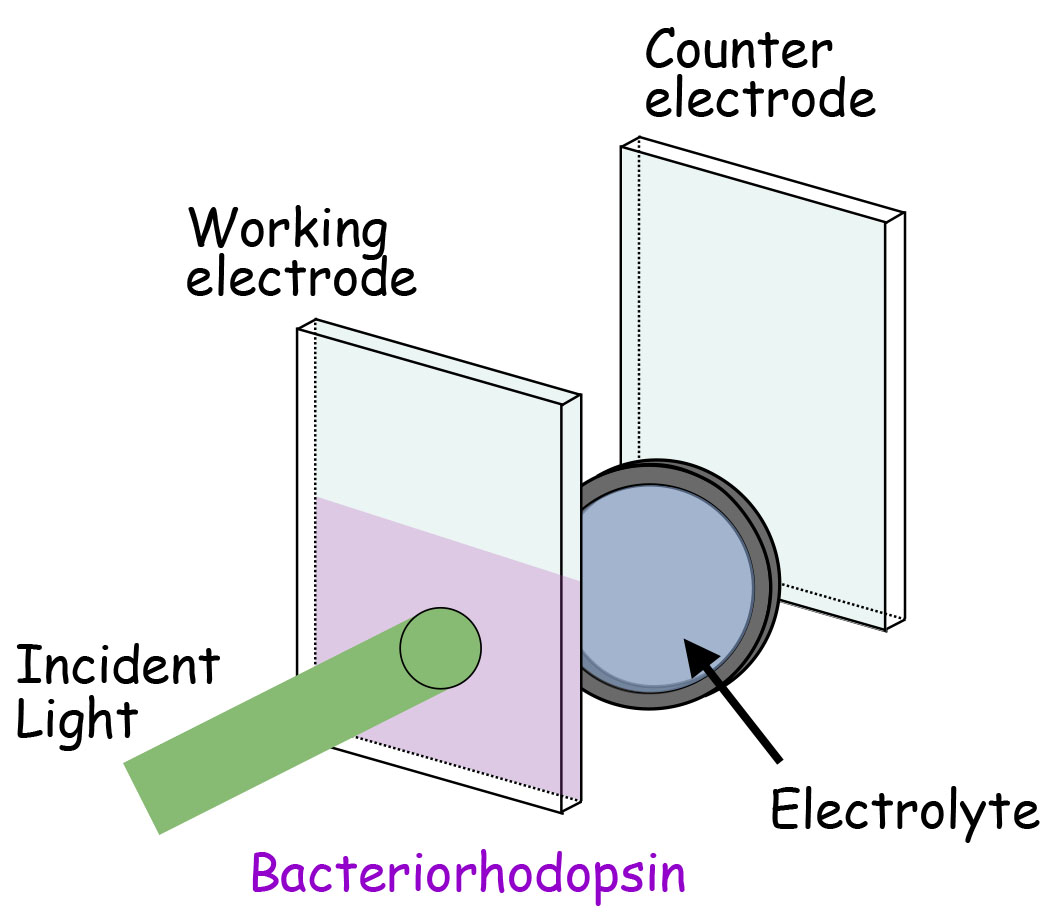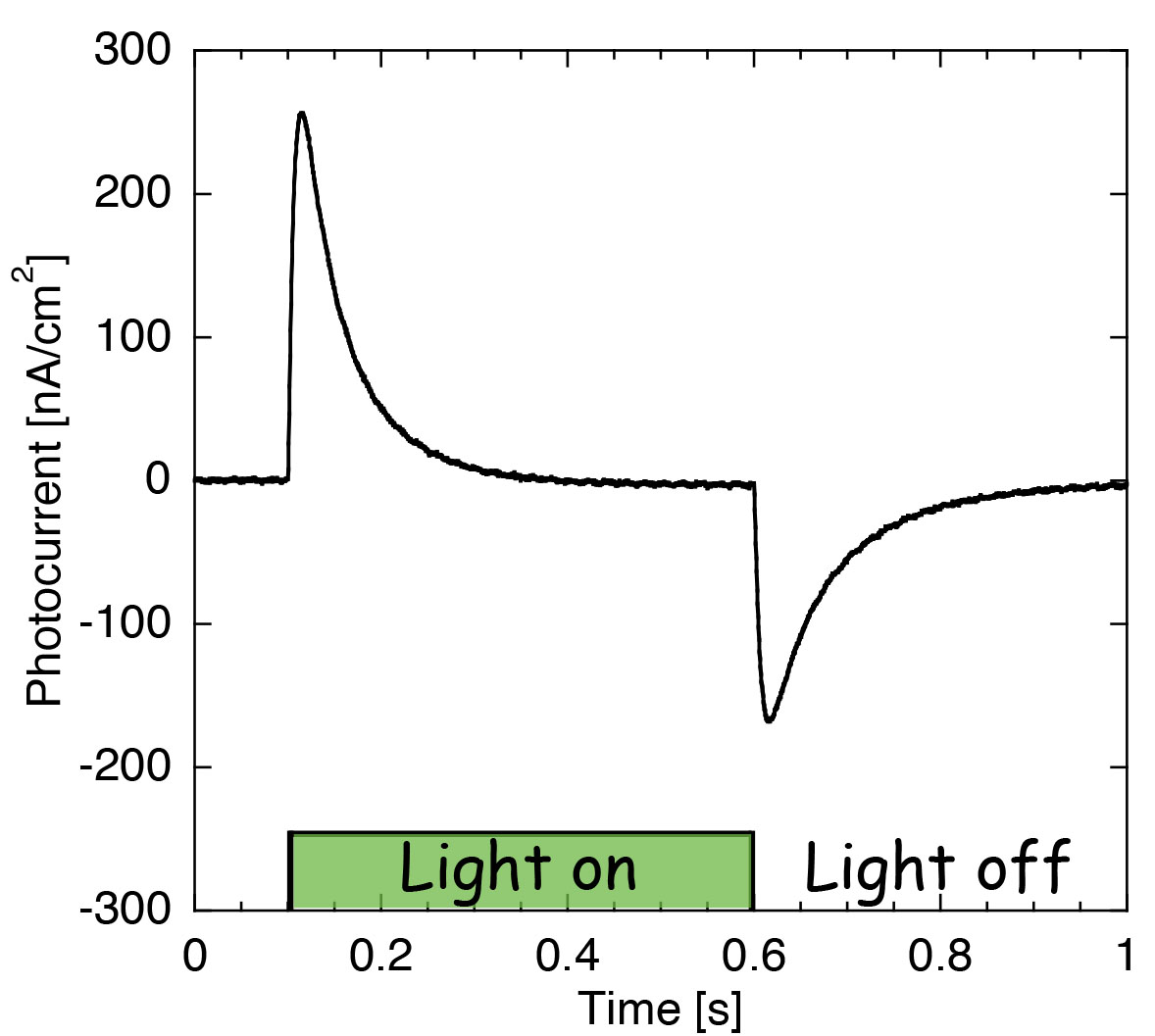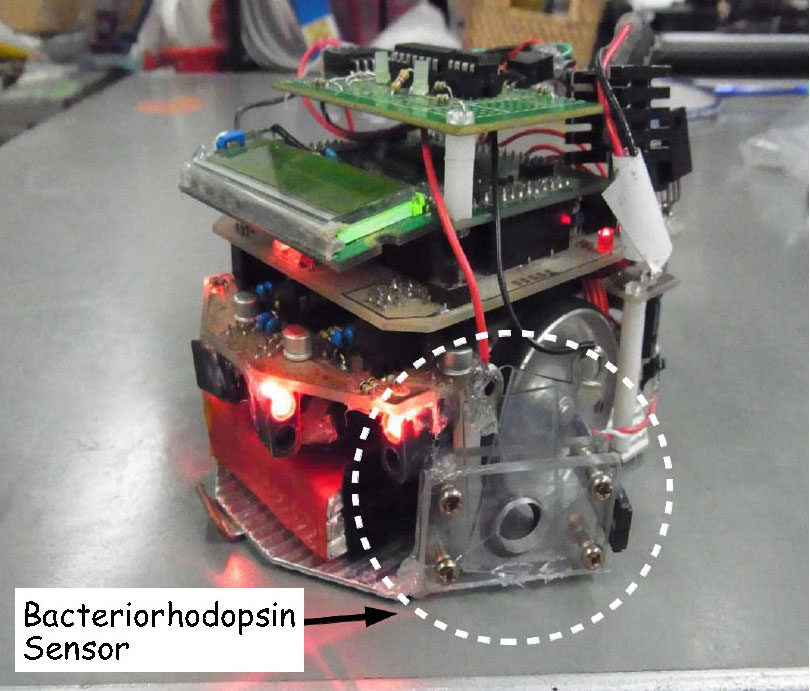Photodetector with visual function and its application to robot vision
Illuminating bacteriorhodopsin (bR) results in a gradient of proton (H+) concentration owing to transportation of protons from the inside of the cell membrane to the outside. Halobacterium Salinarum takes advantage of this feature to perform ATP synthesis, which is a form of photosynthesis. When bR thin film fixed on a boundary surface of electrode and electrolyte solution is illuminated, a transient electric current which appears only the instance of illumination switching (on/off) is observed. This differential photocurrent response , which is specific to vision, results from pH variation of the surface of electrode due to proton pumping. Our goal is to implement a photodetector with visual function which applies the differential response characteristics. We also aim to develop highly sensitive and versatile sensor devices that can be deployed to robot vision and other applications.
Figure 1 illustrates the structure of an electrochemical cell sandwiched by ITO substrates. Figure 2 shows an example of photo-current response pattern induced by wild-type (WT) bR. Our micromouse robot equipped with vision sensors (Figure 3) won a special award in All Japan Micromouse Contest.
Taking advantage of the differential response characteristics, which is sensitive to fast motion and insensitive to slow motion, we are developing a risk-avoiding sensor.
The application to robot vision is a joint research project with Prof. Kazuo Tanaka's Group, Department of Mechanical Engineering and Intelligent Systems.


